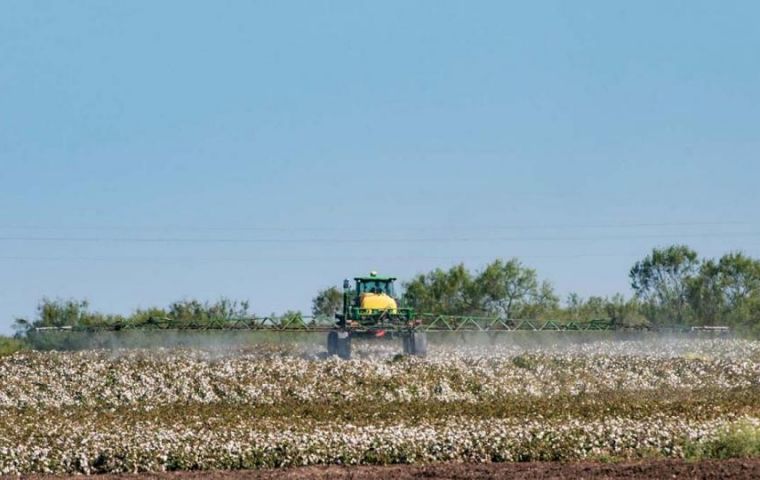MercoPress. South Atlantic News Agency
US will sponsor home production of fertilizers to cut dependence from imports
 According to Vilsack, fertilizer prices in the United States have more than doubled since last year due to the pandemic, limited mineral supply, and high energy costs.
According to Vilsack, fertilizer prices in the United States have more than doubled since last year due to the pandemic, limited mineral supply, and high energy costs. United States Department of Agriculture (USDA) is planning to invest an initial sum of US$250 million for the production of fertilizers in the country. USDA said the goal is the reduction of input costs, which have been strongly affected by the sanctions imposed on Russia, (a leading global supplier) and stimulate competition in the US.
The resources will come from a credit fund created in September 2021 for emergencies in the market, under the name of the Commodity Credit Corporation.
“Recent pandemic-caused disruptions to the supply chain, as well as the effects of the war, have shown the importance of investing in domestic fertilizer production,” US Secretary of Agriculture Tom Vilsack said.
According to Vilsack, fertilizer prices in the United States have more than doubled since last year due to the pandemic, limited mineral supply, and high energy costs.
The United States second-largest importer of each of the three main fertilizer components: nitrogen, phosphorus, and potassium. Major fertilizer exporters include Russia, China, Canada, and Morocco; while Belarus, a close ally of Russia, also supplies a significant share of potash.
USDA said funds will be used to assist independent fertilizer producers in their efforts to increase competition in what is describes as a “highly concentrated market.”
The resource will also only be available to American businesses, and the USDA’s goal is to achieve as much fertilizer independence as possible, and create jobs in the United States.
“The program will privilege innovative technologies and formulas. The idea is to drive the next generation of fertilizers. Likewise the more sustainable, the greater the chance of the company receiving funds. Details will be announced in summer, before the harvest” announced Secretary Vilsack.
However the US Secretary also admitted that “concentrated market structures and potentially anti-competitive practices punish US farmers, businesses, and consumers, who have to face high costs, making life more difficult for those who grow our food”.
The announcement followed on news that Ukraine, once known as the breadbasket of Europe, had banned fertilizer exports due to the Russian invasion of its territory.
Ukraine had already banned exports of some agricultural commodities and introduced licenses for its primary export goods, wheat, corn, and sunflower oil.
“The cabinet of ministers is introducing a zero quota for exports of mineral fertilizers, which is in effect a ban on fertilizer exports from Ukraine,” the ministry said in a statement from Kiev.
The ministry said the ban applied to nitrogen, phosphorus, potassium, and complex fertilizers, must help “maintain the domestic market balance and well supplied”
Ukraine traditionally starts spring planting in late February or March. Farmers said they plan to start sowing in safe areas as soon as possible, and president Volodymyr Zelensky anticipated that Ukraine needs to sow as much as possible this spring, despite the Russian invasion.
Ukraine is not only the world’s biggest exporter of sunflower oil, but harvests some 60 million tons of grain, including 33 million tons of corn and 23 million tons of wheat.




Top Comments
Disclaimer & comment rulesCommenting for this story is now closed.
If you have a Facebook account, become a fan and comment on our Facebook Page!